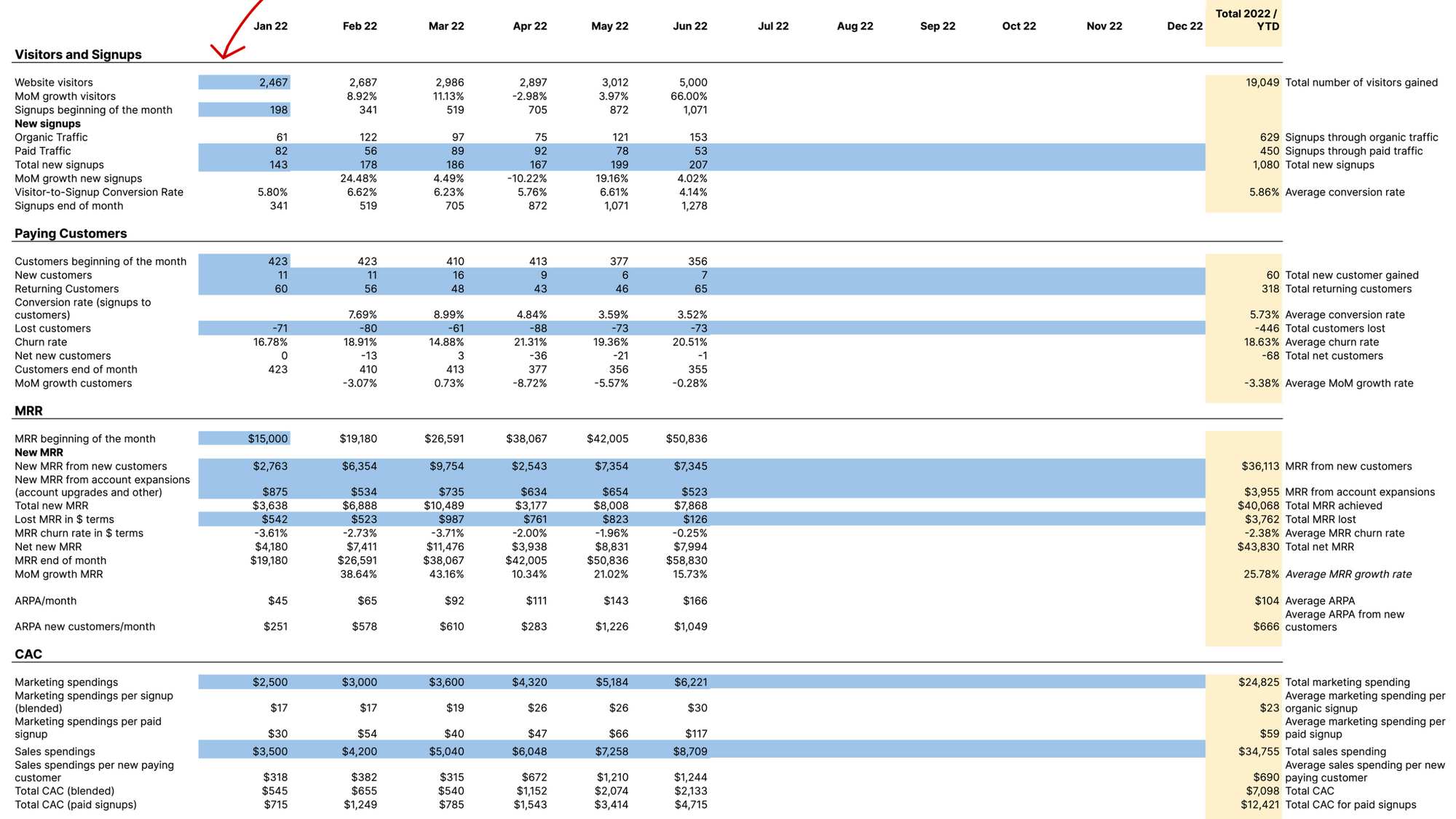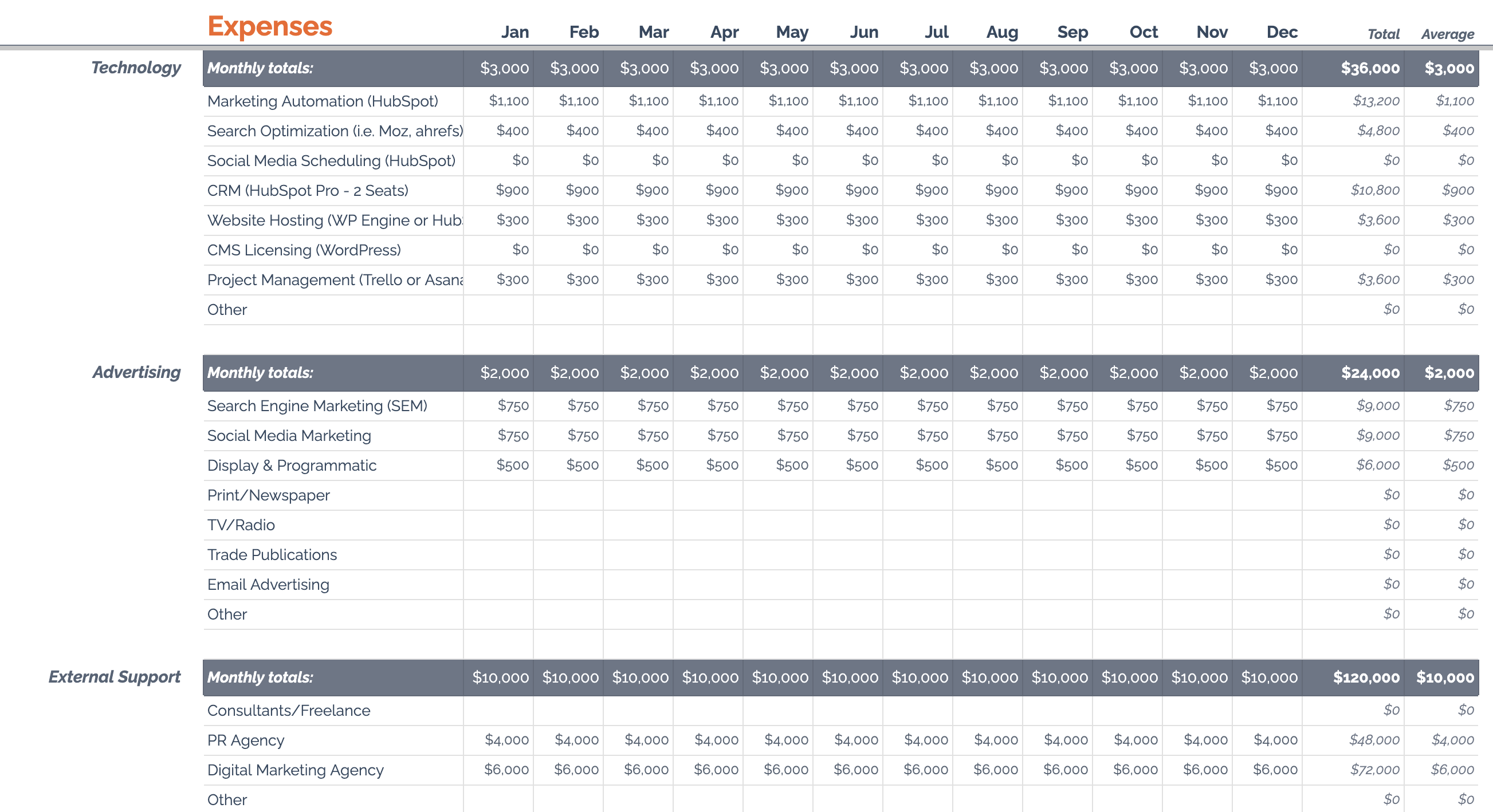"An effective marketing budget is not about how much you spend, but where and how you spend it."
Mastering the art of budget planning is essential for any SaaS company's growth trajectory. If done right, it can be the driving force behind your business's exponential growth. If not, it could leave you with an empty bank account and no customers. Let's dive into how you can avoid the latter.

Understanding the Basics
Before jumping into the thick of things, it's important to grasp the fundamentals of budgeting. The goal of a marketing budget is to strike a balance between spend and return.
In 2020, a Gartner study reported that marketing budgets constituted about 11% of the company's total revenue, with B2B SaaS companies spending anywhere between 15%-25% of their revenue on marketing.
To plan your marketing budget effectively, you need to look at:
- Your company's total revenue (projected for startups)
- The growth phase of your company
- The Customer Acquisition Cost (CAC) vs. Lifetime Value (LTV) ratio
- Your target audience and market size
- Marketing channel costs
With these fundamentals in place, you can now navigate the complexities of budget planning with clarity.
Key Considerations When Planning Your Budget
1. Recognize the Company's Growth Stage

Understanding your company's growth phase is crucial to budget planning. Here's how you can approach it:
Early-stage Startups: At this stage, focus on brand visibility and customer acquisition. According to SaaS Capital, early-stage startups should allocate roughly 80%-120% of their revenue to marketing and sales.
Growth Stage: Focus on reducing CAC, improving customer retention, and expanding market reach. You may allocate between 50%-80% of your revenue to marketing and sales.
Mature Companies: Here, the focus is on maintaining market position and exploring new markets. You may allocate 15%-25% of your revenue to marketing and sales.
LTV/CAC Ratios and Implications
| LTV/CAC Ratio | Implication |
|---|---|
| Less than 1 | Spending too much to acquire customers |
| 1 | Balanced spending and revenue |
| Greater than 1 | Effective marketing spend, room for growth |
2. Understanding CAC and LTV

CAC refers to the cost associated with convincing a customer to buy a product/service, whereas LTV represents the total revenue a customer will bring during their lifetime.
If your LTV/CAC ratio is less than 1, it indicates you're spending too much to acquire customers and need to reevaluate your marketing strategy.
3. Know Your Target Market and Audience

Understand who your target customers are and how to reach them. This will directly influence the choice of marketing channels and tactics, which will impact your budget allocation.
Suggested marketing budget by channel
| Marketing Channel | % of Total Marketing Budget |
|---|---|
| SEO | 15% |
| Content Marketing | 10% |
| PPC | 20% |
| Social Media | 10% |
| Email Marketing | 10% |
| Product Development | 15% |
| Experimentation | 10% |
| Other | 10% |
Common Pitfalls to Avoid
1. Spending too Much too Soon
Startups often get carried away with their marketing budgets, throwing money into every channel available. It's essential to start small, measure effectiveness, and then scale what works.
2. Not Measuring ROI
Not measuring the return on your marketing investments is like sailing a ship without a compass. Set clear, measurable goals for every marketing activity and regularly assess your performance against these goals.
3. Failing to Adjust and Adapt
The market is continually changing. If you set a budget and stick to it rigidly throughout the year without considering shifts in market dynamics, customer behavior, or competition, you're setting yourself up for failure.
Budget Allocation by Growth Stage
| Growth Stage | Marketing & Sales Budget as % of Revenue | Focus Area |
|---|---|---|
| Early-stage Startup | 80%-120% | Brand visibility, Customer acquisition |
| Growth Stage | 50%-80% | Customer retention, Market expansion |
| Mature Company | 15%-25% | Market position, New markets |
Tips for Success
1. Prioritize High ROI Channels
Identify the marketing channels that yield the highest ROI and prioritize them in your budget. Here's where your past marketing data can be invaluable.
2. Allocate for Experimentation
Dedicate around 10%-20% of your budget for experimentation. This allows you to test new channels, tactics, and strategies, and stay ahead of the curve.
3. Review and Optimize
Constantly review your budget and reallocate funds based on performance. This will help you optimize your marketing spend and improve ROI.
Sample Marketing Budget for a B2B SaaS Company
To illustrate these points, let's take an example of a B2B SaaS company with an annual marketing budget of $200k.

You can download the sample marketing budget template here:
Planning a marketing budget for a B2B SaaS company is no small feat. It requires a thorough understanding of your business goals, target audience, and the marketing landscape. But by avoiding common pitfalls and incorporating our tips, you can craft a budget that not only aligns with your business goals but also drives sustainable growth. Happy budgeting!
FAQ
1. How much should a B2B SaaS company typically spend on marketing?
The amount a B2B SaaS company should spend on marketing varies significantly depending on its growth stage. For early-stage startups, marketing and sales budgets can be as high as 80%-120% of revenue, as these companies focus heavily on brand visibility and customer acquisition. Growth-stage companies might spend 50%-80%, with a focus on customer retention and market expansion. Mature companies, on the other hand, might spend only 15%-25%, focusing on maintaining market position and exploring new markets.
2. How do I calculate Customer Acquisition Cost (CAC)?
CAC is calculated by dividing the total amount spent on acquiring new customers by the number of customers acquired in the period the money was spent. For example, if a company spent $1,000 on marketing in a year and acquired 200 customers in the same year, their CAC is $5.
3. What's the role of Lifetime Value (LTV) in budget planning?
LTV is a prediction of the net profit attributed to the entire future relationship with a customer. The higher the LTV compared to the CAC, the more profitable the customer. An ideal LTV/CAC ratio is 3:1. If the ratio is less than 1, you are spending too much on customer acquisition and need to re-evaluate your marketing strategy and budget.
4. What are some common mistakes in marketing budget planning?
Common mistakes include spending too much too soon without testing channels, not measuring ROI, and failing to adjust and adapt. Always start with a small budget for new or untested channels, and keep a close eye on performance. Make sure you have clear KPIs for every marketing activity and use analytics tools to track performance. Finally, be ready to adapt your budget and strategy based on market trends and shifts in customer behavior.
5. How should I allocate my marketing budget across different channels?
This will depend largely on your specific business and market. However, a typical allocation might look something like this: SEO (15%), Content Marketing (10%), PPC (20%), Social Media (10%), Email Marketing (10%), Product Development (15%), Experimentation (10%), and Other (10%).
6. How often should I review my marketing budget?
It's a good practice to review your marketing budget regularly. This could be monthly, quarterly, or annually, depending on your business needs and the pace of your market. Regular reviews allow you to make necessary adjustments based on performance, market conditions, and business goals.
7. How much should I allocate to experimentation?
Experimentation is a key part of a healthy marketing strategy. While the exact percentage can vary, a general guideline is to allocate about 10% of your marketing budget to testing new channels and strategies.
8. What should I do if a marketing channel is underperforming?
If a marketing channel is consistently underperforming, it might be time to re-evaluate your strategy or even consider reducing your budget allocation to that channel. However, before making any drastic changes, try to understand why the channel is underperforming. Are there adjustments you could make to improve performance? Are there external factors affecting results?
9. Can I use the same marketing budget plan every year?
While it might be tempting to stick with what worked in the past, it's important to review and update your marketing budget plan each year. Market conditions, business goals, and customer behaviors change over time, and your marketing budget needs to adapt to these changes.
10. How can I measure the success of my marketing budget plan?
The success of your marketing budget plan can be measured by key metrics such as ROI, CAC, LTV, and the number of leads and conversions generated. Tools like Google Analytics, Mixpanel, and HubSpot can be very helpful in tracking these metrics.




